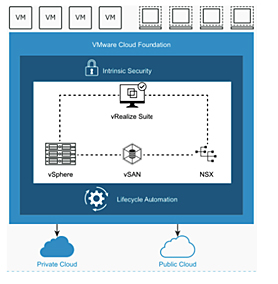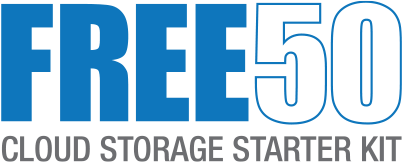 Neil Stobart, Vice President of Global System Engineering, Cloudian
Neil Stobart, Vice President of Global System Engineering, Cloudian
In today’s modern IT departments everywhere, IT managers are using IT infrastructure services from both public and private cloud platforms. IT managers have figured out which workloads operate best on internal or external platforms and have settled into a hybrid cloud strategy, but ultimately public cloud services are a separate “island” of resources to manage and interaction between public and private cloud services have been limited to tiering and DR type services.
The ability to easily manage the most appropriate infrastructure resources with applications is the current theme today coming from many solution providers moving their messaging and offerings to hybrid cloud management.
Nowhere is this more startling than VMware’s move to offer a cloud operating system where their server virtualization and management platform can span compute\network\storage resources in both public and private cloud. VMware Cloud Foundation (VCF) provides an integrated stack of their existing infrastructure management technologies (vSphere, NSX, vSAN, vROPs) to manage, move and monitor live workloads and data sets between any resource under their control.
 Key to this move to a multi-cloud management platform is the management of data. Moving data between private and public clouds is difficult, with large amounts of data movement requiring expensive networking. Security is always a concern, especially with increased cyber-hacking and ransomware activity as well as more stringent legal regulations over data privacy and protection. Performance needs to be aligned for application and user access, and of course and as always, cost is an overriding design parameter.
Key to this move to a multi-cloud management platform is the management of data. Moving data between private and public clouds is difficult, with large amounts of data movement requiring expensive networking. Security is always a concern, especially with increased cyber-hacking and ransomware activity as well as more stringent legal regulations over data privacy and protection. Performance needs to be aligned for application and user access, and of course and as always, cost is an overriding design parameter.
Cloudian have been at the forefront of delivering hybrid cloud storage services from the inception of the company. As part of VMware’s move to embrace the hybrid cloud journey, we have been working together to ensure there is a storage platform that supports their vision of true multi\hybrid cloud deployments.
Indeed, in 2019, VMware selected Cloudian as their design partner to integrate Object Storage with VMware Cloud Director (VCD), serving VMware’s Cloud Provider community. As VMware’s first Object Storage offering for VCD, Cloudian was also VMware’s launch partner for their “Virtual Object Storage Engine” (vOSE) plugin for VCD. VMware Cloud Director is an IaaS orchestration platform for service providers that provides automation on the hardware management side to provide a single self-service portal for consumers to build their own infrastructure platforms. VMware are making it possible to offer Object Storage services as well as traditional block storage services. VMware resells Cloudian today as part of their Partner Connect sales programme to Service Providers enabling a new set of storage-based services using Cloudian and expanding their end-to-end services portfolio (compute\network\storage management stack) to help their service provider customers provide a more complete set of public cloud services.
Cloudian and VMware continue to collaborate, most recently to combine Cloudian Object Storage with VMware’s recently announced VMware Cloud Foundation (VCF) with Tanzu solution, called vSAN Data Persistence platform.
This enables a single data services platform with a single shared storage environment supporting both traditional as well as the new, container-based applications, and serving both IT admins as well as DevOps users.
With this new solution, VMware Tanzu introduces support for running vSphere Virtual Machines as well containerized workloads though the use of Kubernetes. Kubernetes, also known as K8s, is an open-source system for automating deployment, scaling, and management of containerized applications. Developing applications within a container framework provides many benefits for application deployment, including reducing application footprint (no OS required), portability (can run on any OS that supports containers) scalability, resiliency and ability to dynamically assign and re-assign resources on demand.
Containers simplify the typical application deployment by removing the dependency on the operating system. So now we have two application deployment methods – legacy (requires direct OS access) and container.
Containerized workloads interact with data storage differently than with regular architected applications. Any data stored within the container is deemed to be non-persistent and when the container is stopped, this data will be lost. For data persistence a storage “operator” is required. Think of an operator as a driver within the container but spread across all containers that the application is using. Cloudian provides data storage services for workloads with an “S3 operator” that provides persistent storage and integrates with Kubernetes for the automated provisioning of Cloudian storage into these container workloads.
At the same time, here at Cloudian we developed our HyperStore Object Storage application to work within a container model (HyperStore-C) as well as a regular virtual machine. This allows Cloudian to integrate with VMware’s vCenter manager for deployment of clusters as well as provisioning of S3-compatible storage to container, VM and even physical machine-based applications.
This new solution makes use of VMware’s vSAN technology which provides centralized management of physical storage devices between multiple VMware cluster nodes. vSAN has typically offered block storage services for applications within the VMware cluster, but now with the availability of Cloudian Object Storage with vSAN, vSAN users can consider leveraging their vSAN environment for Object Storage use cases. This also introduces new savings and efficiencies with HyperStore utilizing vSAN storage hardware resources and allowing VMware management to control all aspects of the hardware used by HyperStore via VMware’s vCenter management platform.
Combining Cloudian HyperStore with VMware Cloud Foundation with Tanzu extends vSAN platform value, benefits and utility with a modern approach to manage all data and applications with a single data services platform regardless of deployment methodology – for both new (contained-based) as well as existing (legacy) applications and data – where users benefit from the same data management for both private (on-prem) cloud and public cloud. This is all about data and applications rather than storage.
The Cloudian | VMware partnership combines VMware’s leadership in virtualization and cloud technology with Cloudian’s leadership in Object Storage, bridging the gap between public and private cloud platforms and application deployment methodologies.
You may also be interested in:

Free 50 Starter Program for VMWare Cloud Providers

S3 Compatible Storage for VMware Cloud Foundation



